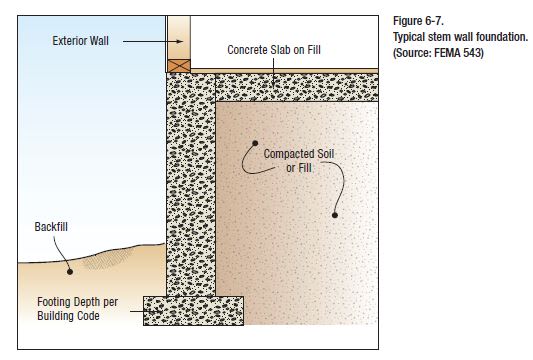Ron247
Structural
- Jan 18, 2019
- 1,128
I have never heard the term "chain wall" used and I have been doing foundations over 30 years. Now I have heard the term used twice in 2 weeks on projects that are unrelated. I asked the 2nd person that used it to describe to me how it was built since he actually built the one he was referring to.
The house is a Slab on Grade and the SOG is only about 4" above exterior grade. He described a strip footing with a stem built up off it that the floor slab ultimately sets on. There is no void under the slab. It is backfilled. The chain wall went around the perimeter and connected the midpoints of the exterior to effectively quarter the slab.
I then looked on the internet and see a description of a concrete system that sounds like it sets on a strip footing that elevates the structure above some "flood elevation". Both projects I was reviewing are only about 4" above the ground and both are SOG. There were not any construction details on the internet to depict a chain wall system so that is the point of this posting.
Does anyone familiar with either of the 2 chain wall descriptions I have mention have a detail that depicts it? I am more interested in details of the Internet described one but also need one for the SOG. The one described by the Client sounds like a strip footing with any type of stem (grade beam or masonry block) that I am familiar with but never heard it called a chain wall.
Strange that you can go 30-40 years without hearing something and then get bombarded with it every time you turn around. Kind of like Roulette, bet the 12 until you are bankrupt and it never hits, then when you have no more money to bet, the 12 hits 3 times in the next 5 spins.
The house is a Slab on Grade and the SOG is only about 4" above exterior grade. He described a strip footing with a stem built up off it that the floor slab ultimately sets on. There is no void under the slab. It is backfilled. The chain wall went around the perimeter and connected the midpoints of the exterior to effectively quarter the slab.
I then looked on the internet and see a description of a concrete system that sounds like it sets on a strip footing that elevates the structure above some "flood elevation". Both projects I was reviewing are only about 4" above the ground and both are SOG. There were not any construction details on the internet to depict a chain wall system so that is the point of this posting.
Does anyone familiar with either of the 2 chain wall descriptions I have mention have a detail that depicts it? I am more interested in details of the Internet described one but also need one for the SOG. The one described by the Client sounds like a strip footing with any type of stem (grade beam or masonry block) that I am familiar with but never heard it called a chain wall.
Strange that you can go 30-40 years without hearing something and then get bombarded with it every time you turn around. Kind of like Roulette, bet the 12 until you are bankrupt and it never hits, then when you have no more money to bet, the 12 hits 3 times in the next 5 spins.

